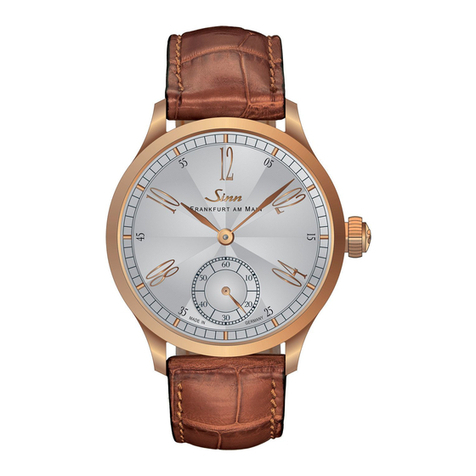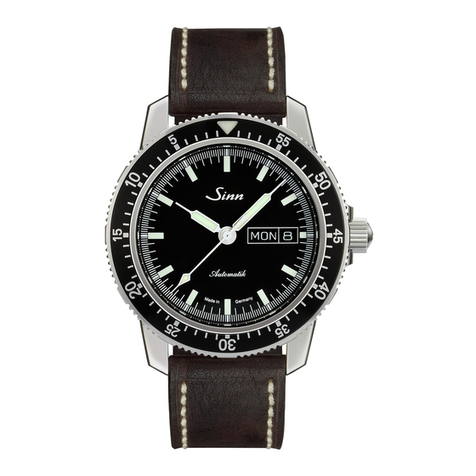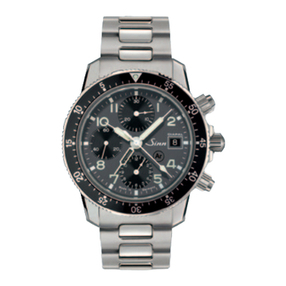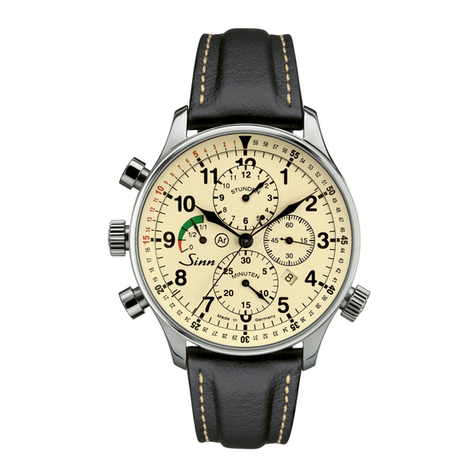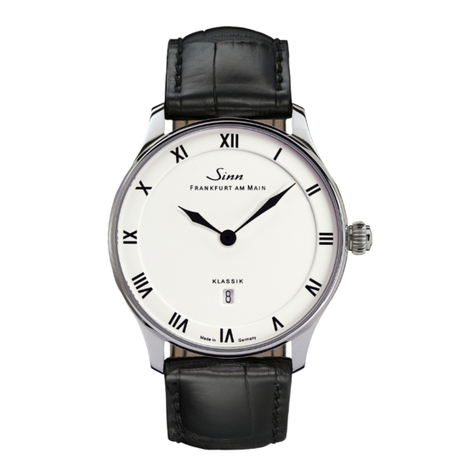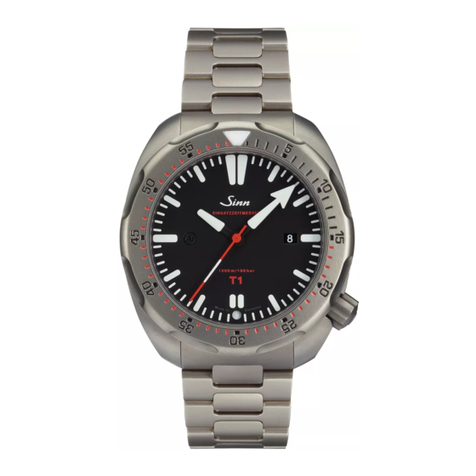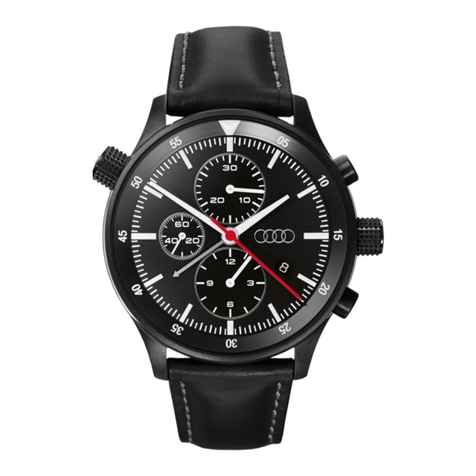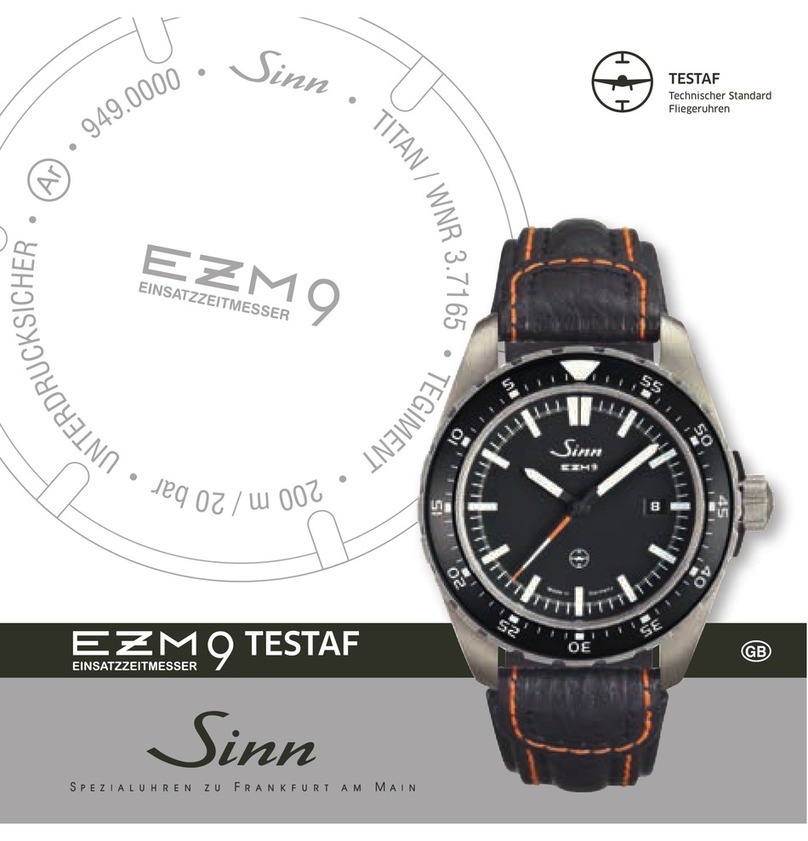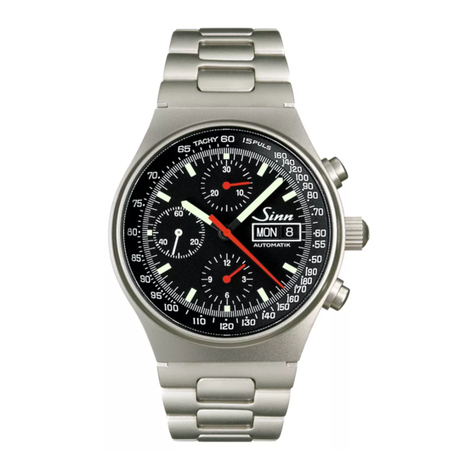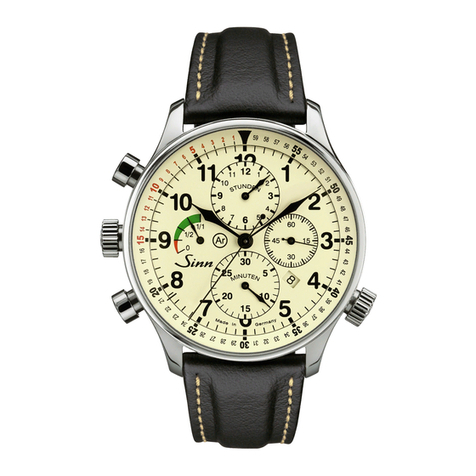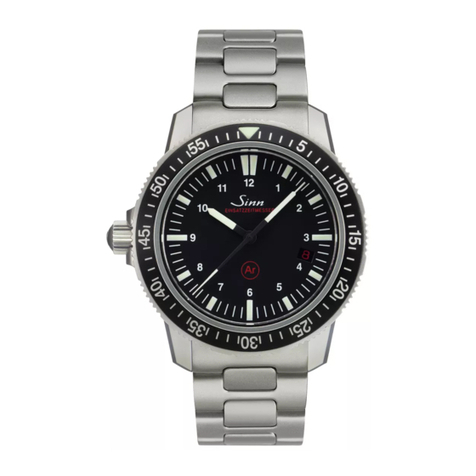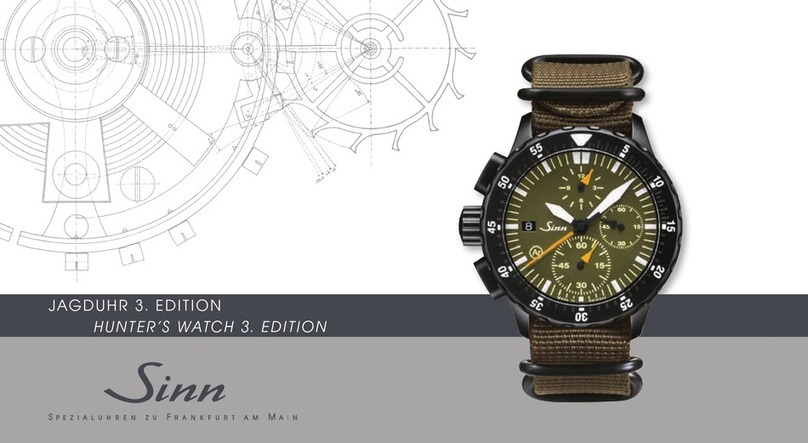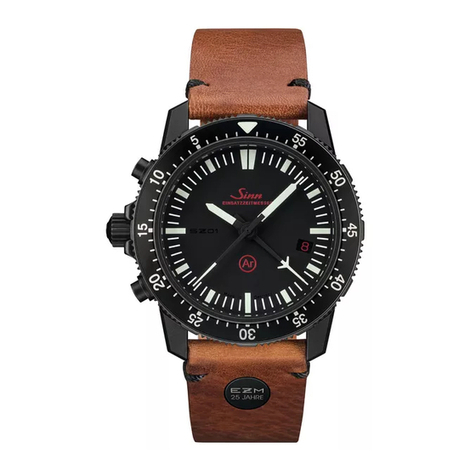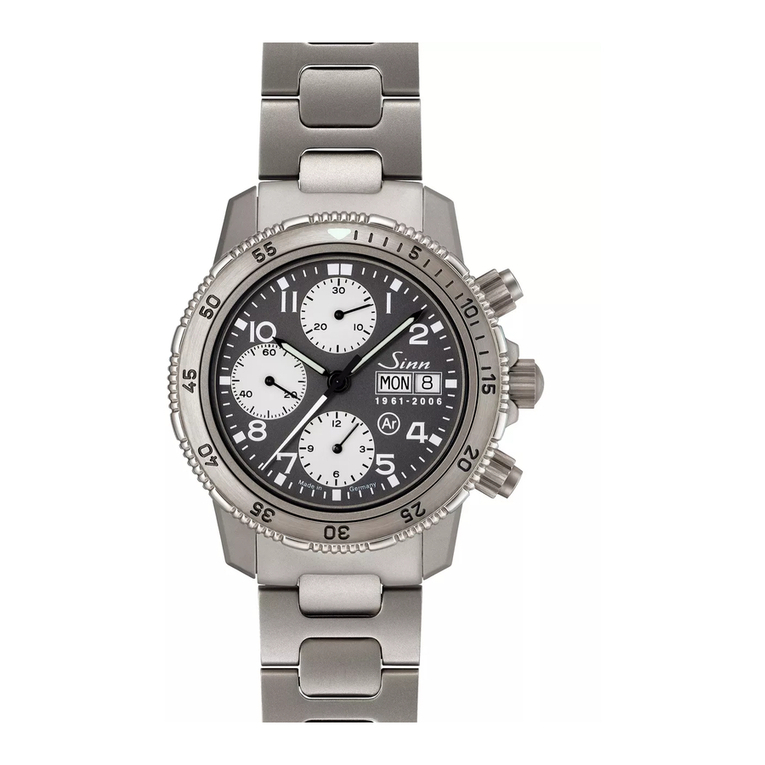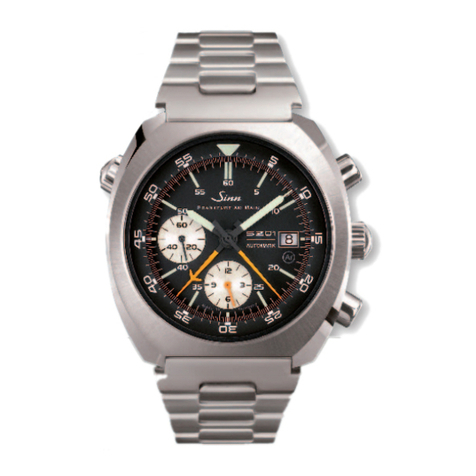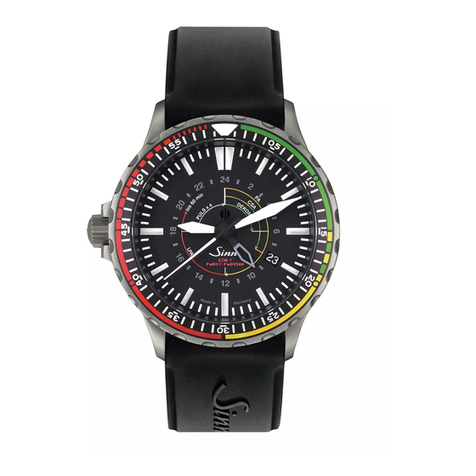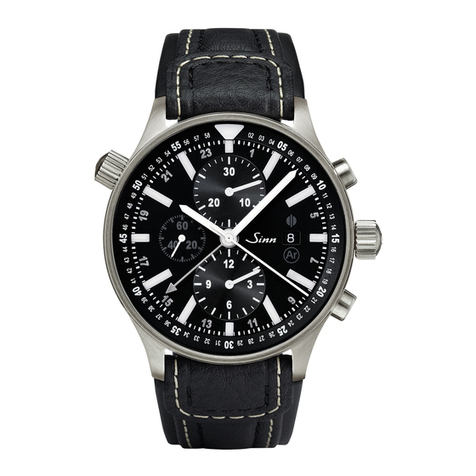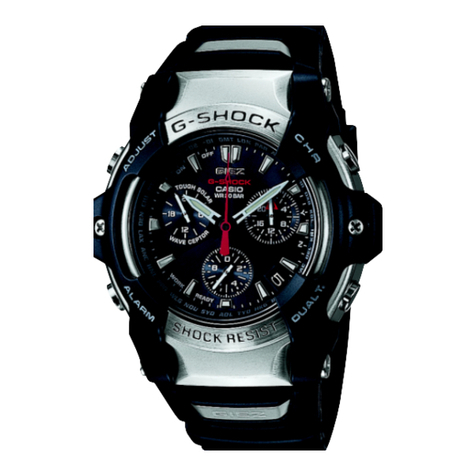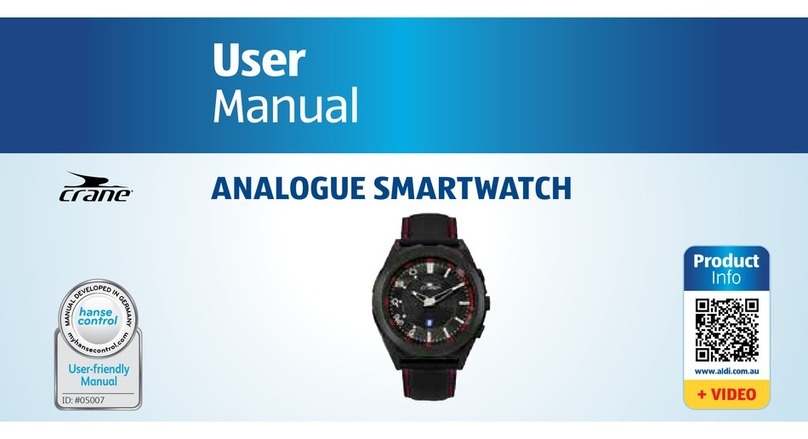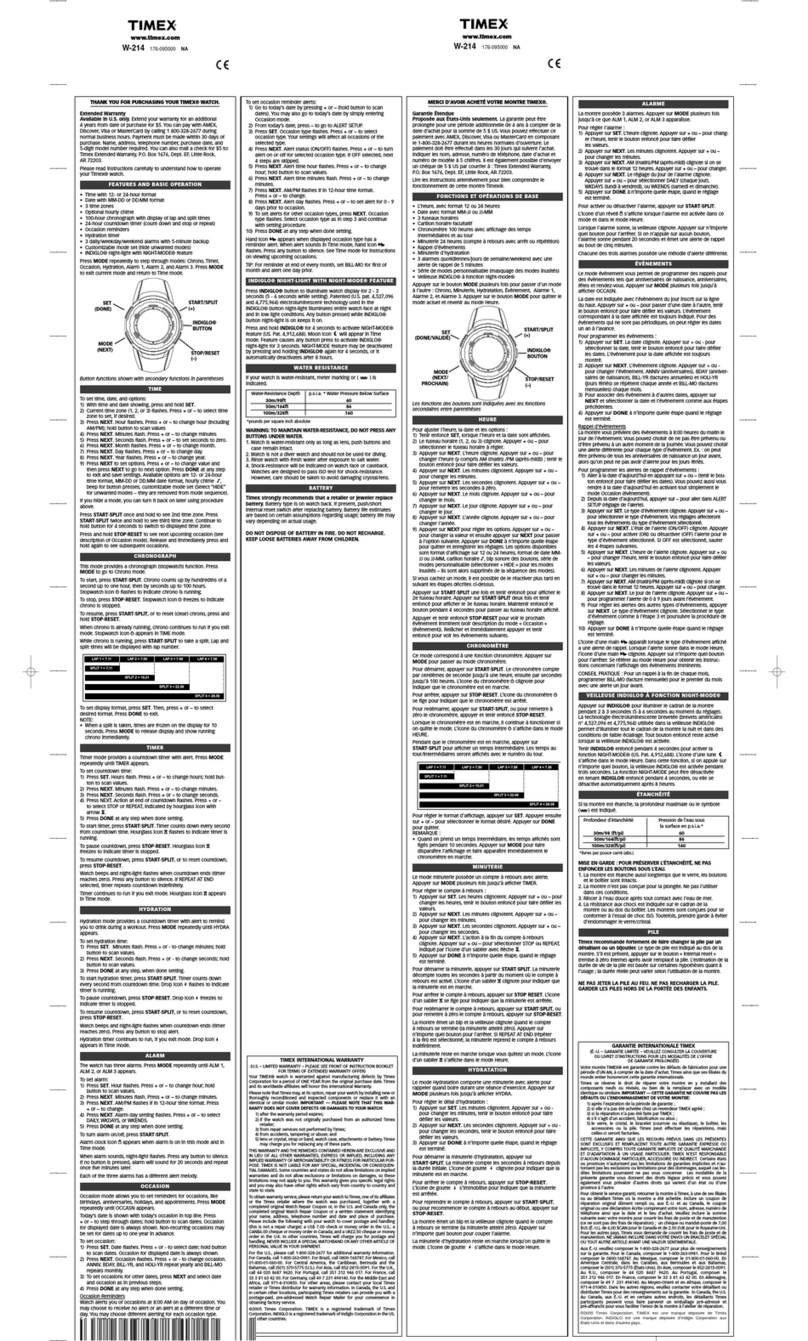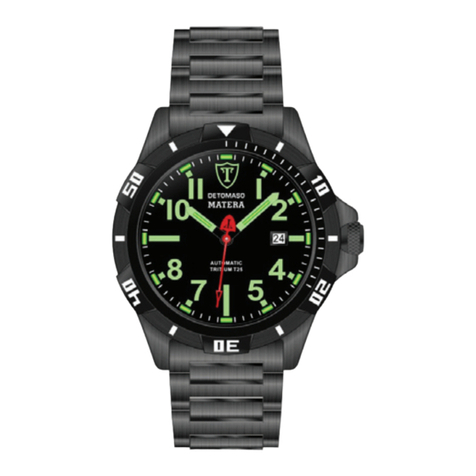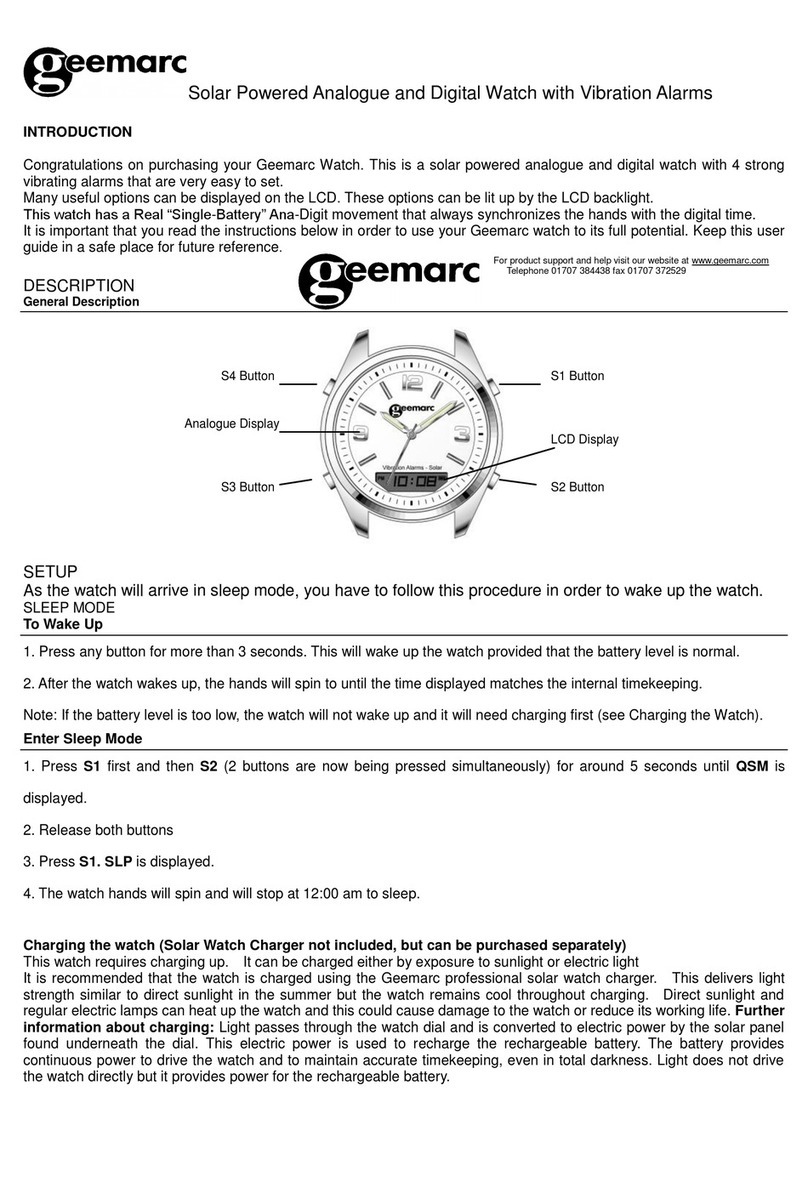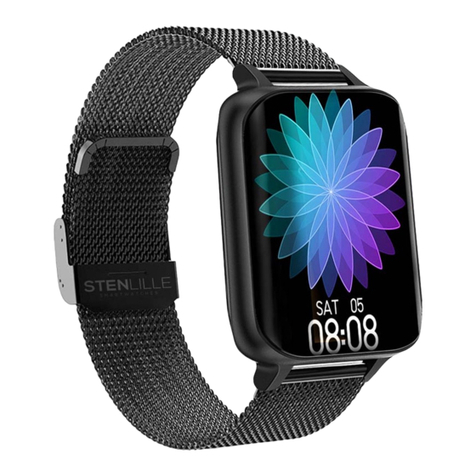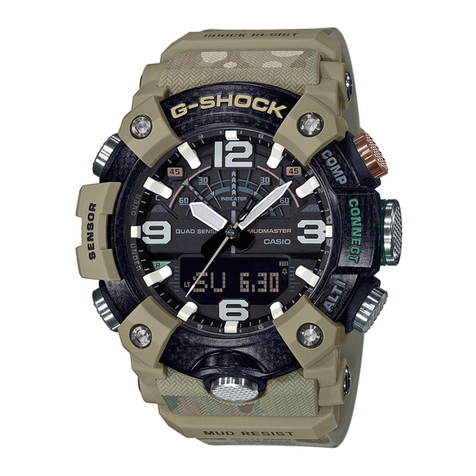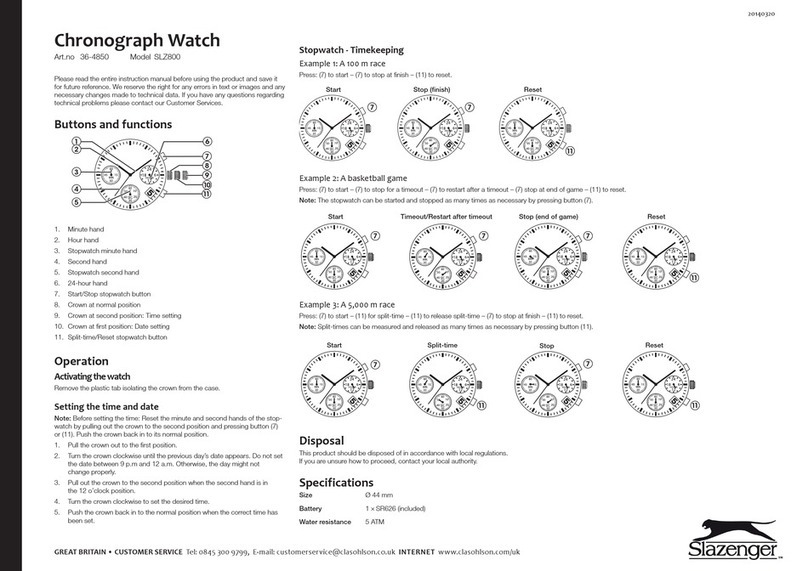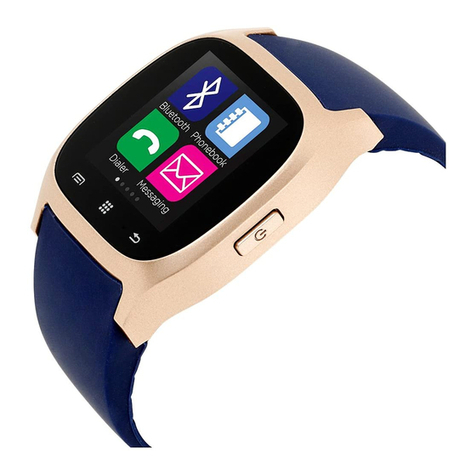7
SINN SPEZIALUHREN ZU FRANKFURT AM MAIN
It was back in 1961 that pilot and blind-flying instructor Helmut Sinn founded
the company. Since then, we have been committed to producing high-
specification mechanical watches. In 1994, the graduate engineer Lothar
Schmidt took over the company. This marked the beginning of a new era
for the SINN brand, because the new owner took a decisive step towards
more innovation. Under his leadership, new technologies and materials were
introduced, thus providing the crucial incentives for our company’s evolution
and gradual emergence as an insider’s tip for lovers of fine watches. Today,
our name stands for technical innovations – much to the delight of both the
trade and our customers alike.
Technical innovations
Take, for example, the absolutely condensation-free, anti-reflective, German
Submarine Steel diving watch – made possible by HYDRO Technology. Other
examples include a chronometer chronograph fashioned from a 22-carat
gold alloy that is as hard as stainless steel and a chronometer with a magnetic
resistance of up to 80,000 A/m. There are also watches with a clockwork
mechanism optimally protected from aging by an inert gas and integrated
dehumidifying capsule. The list would not be complete without mentioning
the development of mission timers (Einsatzzeitmesser or EZM in German) for
firefighters, for special police units and border patrol guards. DIAPAL is one of
our most important technological developments, with oiling no longer needed
for the most important functions in the watch thanks to the materials we select.
This technology was first used in 2001. With the aid of TEGIMENT Technology, we
achieve greatly increased scratch resistance through surface hardening.

